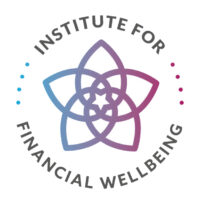If there has been one area of increased spending over the last month, it’s been on food and according to the Financial Times, an additional £1.9bn has been spent in supermarkets alone.
Catherine Morgan guides us through the three steps we need to follow to stop repeated cycles of food overspending and how to overcome it. However, if food isn’t the overspend area for you, which it is for many people, this can be applied in any area.
Identify the Issue – Look backwards before you can look forwards
The first step is to identify the issue. It may be easy for you to say; “Well, I’m overspending on food.” But that isn’t actually the issue. The issue is the underlying emotional reason that’s driving that behaviour in the first place.
For example, most people who have a repeated cycle of overspend, this will be because they’re being driven by some kind of emotion, whether that’s stress, whether that’s fear, whether that’s anxiety. These emotions are really common and often we try and give our families, our children, and ourselves a life that we maybe didn’t have ourselves.
Firstly, try to establish the emotion behind overspending in the first place. If, for example, you know that when you’re feeling stressed, maybe it’s on the way home from work and you feel stressed at work. You always go home via M&S, for example, you go with all good intentions to buy one pint of milk and you end up with £40 worth of stuff in your basket. This is really common and if you can identify that trigger, then you can reverse that by doing something different. That might be taking a different route home. So maybe you don’t drive past Marks and Spencer, or you don’t walk past.
Identify ‘The One’
Once you’ve identified and looked back at some of the emotional triggers, or looked back at what you’re actually spending, then step number two is to look at what would be the next best step. For example, if you’re spending £1000 on food and you want to spend £800 a month, and you think that’s a realistic goal for you to have. That’s £200 per month you’re saving, so where are you going to put that now? The reason this step is really important is because you want to be able to visualise and think ahead.
‘The Next Right Thing’ – Reward Yourself!
What’s the reward going to pay at the end of saving that £200 per month? That £200 a month could be put into a foundations pot so that you could start building an emergency fund. It could be put into a personal development pot. Or, that £200 a month could be put into a treat pot for the children so that rather than treating them with food, you could maybe treat them in another way. Maybe put it into an investment for their financial future. So rather than worrying about their financial future, you could start making some changes. Maybe it’s that you could be redirecting that to pay off some of those credit cards to get those debts paid off quicker.
There’s got to be a reward at the end of it, and you’ve got to have that momentum. A lot of people say “I plan to do these things. I have all good intentions, but it never happens”. The likelihood is that’s because you’re not following these three steps.
Catherine Morgan is a multi-award winning, qualified financial planner and money coach. She is the founder of The Money Panel.

